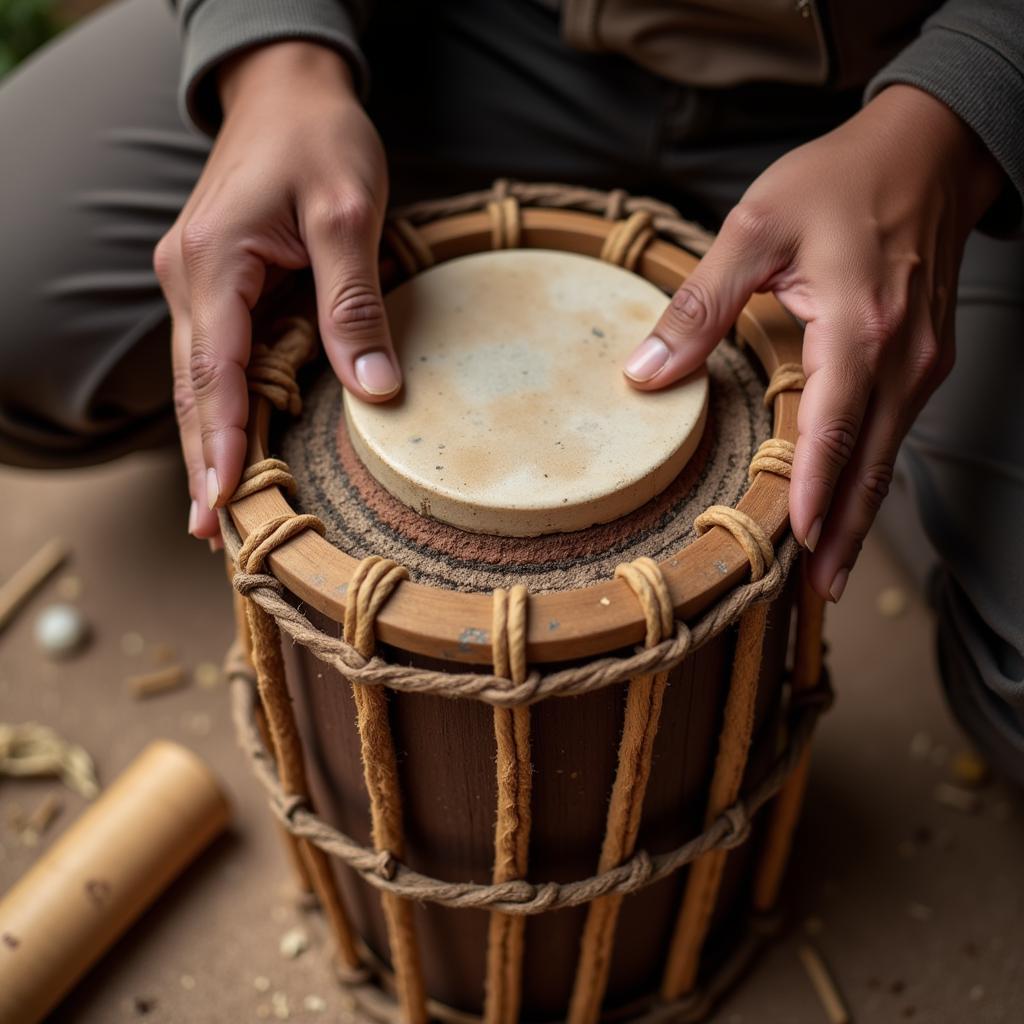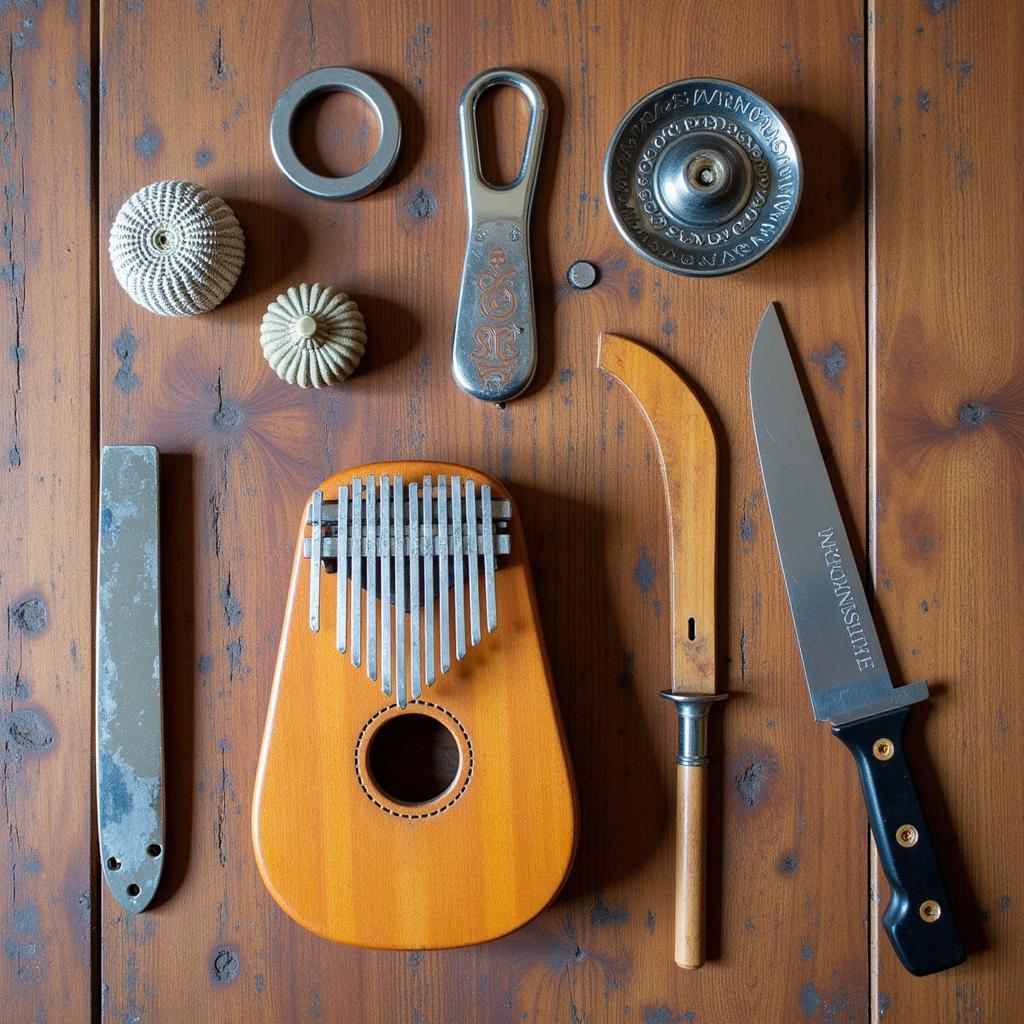African Instruments DIY: Unleash Your Inner Rhythm with Homemade Creations
Crafting your own musical instruments is a rewarding experience, and African Instruments Diy projects offer a unique opportunity to connect with the continent’s rich musical heritage. From the rhythmic beats of the djembe to the soothing melodies of the mbira, African instruments are known for their distinctive sounds and simple construction, making them perfect for DIY enthusiasts.
Exploring the World of DIY African Instruments
 DIY African Drums
DIY African Drums
African music is deeply intertwined with the continent’s cultural fabric, serving as a means of communication, storytelling, and celebration. While commercially produced instruments are readily available, the act of creating your own instrument adds a personal touch and allows for a deeper appreciation of the craftsmanship involved.
Choosing Your DIY African Instrument Project
 African Mbira Construction
African Mbira Construction
The best DIY African instrument for you will depend on your musical preference and skill level. Some popular options include:
- Djembe: This goblet-shaped drum, originating from West Africa, produces a wide range of tones and is relatively simple to construct with readily available materials.
- Shekere: A percussive instrument consisting of a gourd covered in a net of beads, the shekere is easy to make and produces a bright, rattling sound.
- Mbira: Also known as the thumb piano, the mbira consists of metal keys attached to a wooden soundboard. While slightly more complex to build, the mbira offers a rewarding challenge and produces enchanting melodies.
- Talking Drum: This West African drum mimics the tones of human speech and can be a fascinating project for those interested in the intersection of music and language.
Gathering Materials and Tools
Most DIY African instruments can be crafted using readily available materials, many of which you may already have at home. Common materials include:
- Gourds: Dried gourds form the base for instruments like the shekere and some types of drums.
- Wood: Various types of wood are used for drums, mbiras, and other instruments.
- Animal Skin: Traditionally, animal hides are used for drumheads. However, synthetic alternatives are readily available and offer comparable sound quality.
- Metal Keys and Wire: These are essential for constructing instruments like the mbira.
- Beads and Decorative Elements: Personalize your instrument by adding beads, carvings, or other decorative elements.
“When choosing materials, it’s essential to prioritize ethically sourced and sustainable options,” advises Abena Osei, a master drum maker from Ghana. “Respect for nature is paramount in traditional African instrument making.”
Constructing Your DIY African Instrument
 African Instrument Making Workshop
African Instrument Making Workshop
Detailed instructions and tutorials for building specific African instruments are readily available online and in craft books. It’s important to follow these instructions carefully and to use appropriate safety precautions when working with tools.
Tips for DIY Success
- Start with a Simple Project: If you’re a beginner, opt for a less complex instrument like the shekere or a basic drum.
- Be Patient: Crafting an instrument takes time and patience. Don’t get discouraged if it doesn’t sound perfect right away.
- Experiment with Sound: Once your instrument is complete, experiment with different playing techniques to discover its full sonic potential.
- Embrace Imperfections: Remember that handmade instruments are unique and often have more character than mass-produced ones.
Conclusion
Creating your own DIY African instrument is a journey of discovery, connecting you to a vibrant musical heritage and allowing you to express your creativity. Whether you’re a seasoned musician or a curious beginner, the satisfaction of playing an instrument you crafted yourself is an experience like no other. So gather your materials, unleash your inner rhythm, and embark on this rewarding adventure!


